Table of contents
Before the discovery of DNA testing, there were challenges in establishing a lot of genetic facts. For instance, without the test, it is difficult to settle a paternity dispute if more than one person could be a child’s biological father. In criminal cases, it was more challenging to identify suspects of a crime even if their body fluids, skin, or hair was found at a crime scene, since there was no DNA evidence to compare them. Continue reading to discover how DNA testing works and why it may be the best choice to explore everything from ancestry to paternity.
Today, DNA testing offers an accurate and precise solution to resolve these questions and many more. DNA has become so essential that in 2013 the supreme court even ruled that DNA could be legally collected after arrest to see if the DNA matches with any unsolved criminal cases in their databases. In 2018, DNA evidence even helped law enforcement catch the Golden State Killer 40 years after his crime. He was later charged with 13 counts of murder and 13 counts of kidnapping.
But how does DNA testing work? This article will cover the background of direct to consumer genetic testing. You can also learn how you can take a DNA test from home, and what you can expect of the results.
What is DNA testing?
Deoxyribonucleic acid, or DNA, is the genetic material we inherit from our parents. It is composed of a series of base pairs that provide directions for making us who we are. Humans share 99.9% of their genome. It is the differing 0.01% that makes us unique. We receive 50% of our total DNA from our mother and the other 50% from our father.
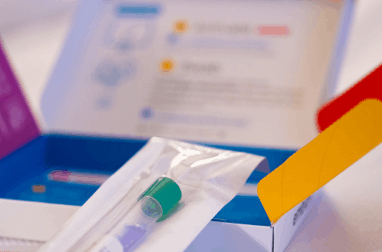
DNA testing, also known as genetic testing, reads your DNA’s sequence of base pairs and identifies changes in DNA sequence or chromosome structure. A DNA test can decode many things about human genetic makeup:
- Ancestry including your ethnicity estimates, where your ancestors come from, living relatives through DNA matches
- Susceptibility to genetic disorders
- Predispositions to certain traits
- Recommendations for everything from diets to skin care
- Paternity
All these results are based on the fact that we all inherit our parents’ genes, and we all have unique genetic compositions.
How does a home DNA test work?
Whether you’re interested in ancestry, disease susceptibility, or trait analysis, you can perform most DNA tests from the comfort of your home and receive the results digitally on your computer. Most DNA tests work through a very similar procedure. The exception is paternity tests for legal purposes, which must be done at on-site laboratories. At home paternity tests, where available, are for peace of mind purposes only. Most at home DNA tests follow the procedure:
1. Decide the kind of DNA test you want
There are many kinds of DNA tests on the market. Some, like Ancestry DNA and FamilyTreeDNA, are most known for their ancestry tests. These tests are probably some of the top options if you are interested in genealogy research.
Others, like Genopalate or DNAFit, are specific for diet or fitness analysis and have no ancestry component at all. It’s important that you consider what type of genetic information you are most interested in and choose a DNA test with the most reliable results, preferably at a reasonable price. You can check out our DNA testing reviews on our blog!
Unlike most DNA tests that only analyze 0.02% of your genome, Nebula Genomics 30X Whole Genome Sequencing decodes 100% of your DNA. With weekly updated reports covering both disorders and traits and the option for deep ancestry analysis in collaboration with FamilyTreeDNA, you can be sure that you are receiving the most information you can get out of your genetic code – with one easy test.
2. Order the DNA kit
You don’t have to visit a DNA laboratory before you can do a DNA test. All you have to do is search online for the company and order your kit. Typically, you will set up a customer account and pay with a credit or debit card. Some testing companies charge lab fees in addition to the test itself.
You can order directly from the company’s website or a third-party website like Amazon. Depending on the company, you will receive the kit via USPS, UPS, or FedEx. Some DNA tests can only be shipped to the continental United States. Others are specific to other locations, like WeGene that only ships to Asia. Unlike other genetic testing companies, Nebula Genomics ships to nearly every country in the world.
3. Register your DNA kit
For the DNA test to work, most DNA companies require you to register your DNA test kit before taking the sample. This will activate the kit on their site and help them get more information about you to enhance the test quality. It also makes your sample anonymous by associating the sample with a number, instead of your name or other personal information. However, not all companies require kit registration. If you must register the kit, you’ll find such information on its label.
4. Collect your DNA sample
Now, it’s time to collect the sample. You must be careful at this stage to prevent sample contamination, which will interfere with your results or can even make the sample unreadable by the company. Sample contamination is one of the biggest mistakes that can cause a DNA sample to be inaccurate.
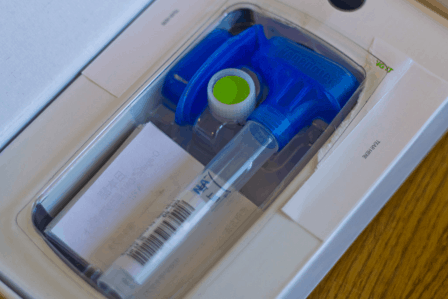
Some DNA samples are collected by rubbing a cheek swab on your cheek’s inner wall. Others require a saliva sample or a blood test that requires a blood sample. Some prenatal genetic tests require a sample of amniotic fluid.
How does a DNA swab test work? A cheek swab DNA test (also called a buccal swab) is the most DNA collection methods because it collects enough DNA that most laboratories can easily extract DNA and sequence it. It works by scrapping off epithelial cells from your cheek. These cells contain exactly the same DNA as blood cells and are more than 99.9% accurate. You can avoid contamination by ensuring that the swab or collection vial doesn’t touch any other surface before or after the sample collection. Read your kit label to know the suitable sample you should collect.
5. Label the sample kit
After collecting the sample, you should label the sample kit with the necessary information. Such information might include your name and gender. However, before you begin to label, ensure your sample is secured by closing it appropriately.
6. Mail the DNA sample to the lab
Once you’re done with the processes above, you should mail back the sample to the company. There, they will perform the test and notify you once the result is ready. Such notification may be through email. You can then visit their website to download and view your DNA result. Depending on the company and the type of analysis being performed, results can take anywhere between a few business days to 14 weeks after the sample arrives at the lab. Most DNA results are ready in 3-4 weeks.
How do different DNA tests work?
There are different DNA tests performed for various purposes. Each one of these tests works on a different principle based on the genetic material called chromosomes.
Y-DNA tests
This test looks at the Y-chromosome of an individual to decode information about their paternal lineage. However, it can only be performed by males with a Y chromosome. This is because the Y DNA is only transferred from father to son. This test is mainly used for ancestry tests to trace your paternal line. However, your doctor can recommend you to do a Y-DNA test if they want to know about genes you inherit from your fathers’ line.
mtDNA tests
This is also called the mitochondrial DNA test. It examines the mitochondrial DNA of a person to decode information about their maternal line. Both males and females can do this test because it examines mitochondrial DNA, which is transferred from mother to child. Like the Y DNA test, this test is normally performed as an ancestry test to trace information. In this case, it is from the maternal line.
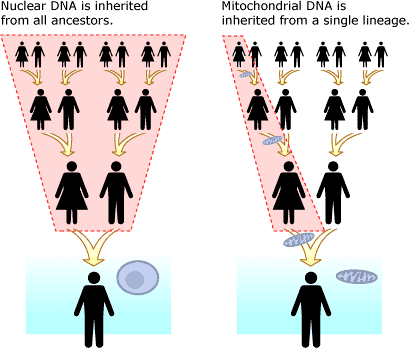
Autosomal DNA tests
Everyone has autosomal chromosomes; therefore, anyone can take the test. This test decodes a person’s autosomal chromosomes, which are the other 22 chromosome pairs a human inherits besides the X and Y chromosomes. Most DNA tests for anything except paternal and maternal lineages will use autosome-based DNA tests.
In most cases, these tests target specific single nucleotide polymorphisms (SNPs pronounced “snips”). SNPs are pieces of DNA that usually correlate with specific traits or genetic variants.
How to find a DNA company offering an easy procedure
While there are plenty of DNA companies offering easy procedures, you should also be conscious that the company you are using is reliable and produces accurate results. Therefore, if you’re looking for a DNA testing company that will serve you right without stress, you should follow the tips below:
Search online
Companies with easy procedures will provide at-home DNA testing services. Any company that offers such services should have an easy to access online presence because it is where they meet their prospective customers. Thus, you should search online for companies with websites. Take the time to review their respective sites and see whether the types of DNA testing they offer meet your needs.
Read their reviews
Now, move straight to their review section to see what people say about them. Although most DNA tests work the same, their customer experience may be very different. If their procedure is easy and their service is reliable, you’ll find more positive comments in their review section. It is also useful to search for reviews on third-party sites since these comments tend to be less biased than reviews posted on company websites.
In most cases, you will see a mix of positive and negative reviews. When you get to the negative reviews, you can see what aspect customers had a bad experience with. These complaints tend to be slow processing times or poor customer service. Sometimes though, it could be issues with the test being inaccurate.
Seek referrals
Do you have any friends, neighbors, or relatives who recently did a DNA test? Maybe it’s time to speak to them and hear about their experience with the company they patronized. If the company offers an easy procedure and serves them rightly, you can also patronize them.
Understanding DNA test result
Although most DNA tests will be performed in laboratories that allow them to be analyzed by your doctor, you don’t have to visit a genetic counselor or physician before you understand your DNA profile. Most prescribed DNA tests require informed consent. Let’s investigate the results of some common DNA tests available without a formal recommendation.
How does DNA testing work for paternity?
A DNA paternity test kit often requires collecting the child’s DNA sample and that of the mother and any alleged fathers. The result will comprise a table comparing the DNA samples and demonstrating any biological relationships. Under the table, you’ll find a text that reads, “probability of paternity.”
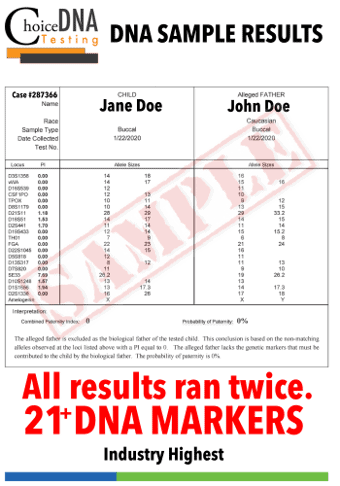
For the child’s biological father, the probability of paternity will be about 99.9%. On the other hand, if the man is not the child’s father, the probability of paternity will be 0.
At home paternity tests do not satisfy court orders for issues such as custody and child support. In this case, the legal testing must be performed in approved on-site labs in order to maintain the chain of custody of the samples.
How does DNA testing work for ancestry?
Ancestry DNA results often contain information about where your ancestors originated from, helping you build your family tree.
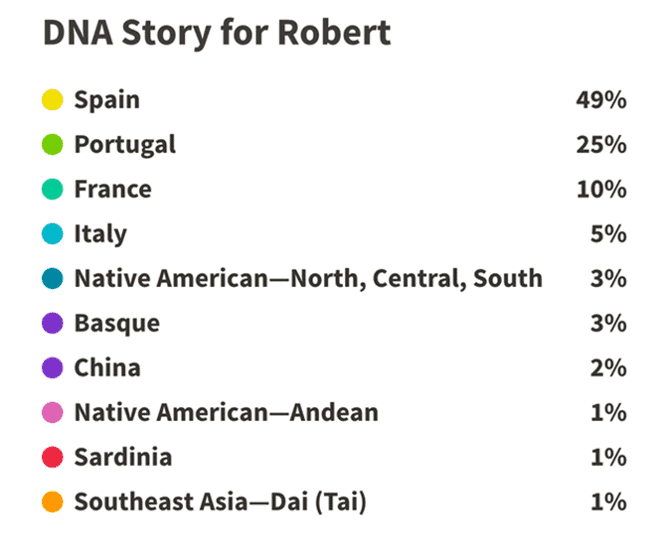
For instance, considering the result above, the individual has ancestors from different countries, including Spain, Portugal, France, and Italy. The percentage shows your genetic compatibility with that of the people in those countries.
You can also trace haplogroups through Y-DNA and mtDNA tests, which demonstrate where your ancestors lived and often how they migrated.
DNA matches are some of the most interesting results of ancestry DNA tests. Here, companies determine whether you share DNA with others in their database and help you find common ancestors. They can help you find relatives, such as parents, siblings, and cousins, who also submitted their DNA. Sometimes, these are relatives you were not aware you had.
How does DNA testing work for disease?
If you test for your susceptibility to a disease, the home test will work to provide a result that shows your risk of having the disease. It’s important to remember that most diseases are only partially genetic. Thus, if you have a genetic variant associated with a disease or disorder, this is only predisposing you to the disease – it does not determine if you have or ever will have that condition.
Family history is often an important feature to consider when you are deciding to test for a particular condition. Other factors, such as environment and lifestyle will also influence your chances of developing the disease.
Nebula Genomics offers reliable DNA testing
Nebula Genomics is a leading DNA testing company offering reliable services. We use 30X Whole Genome Sequencing to decode 100% of your DNA and produce 10,000 times more DNA data than other DNA tests like 23andMe and AncestryDNA. The Whole Genome Sequencing (WGS) that we use decodes all 6.4 billion DNA base pairs in the human genome, including the complete set of all 20,000 genes, mitochondrial DNA, and the Y chromosome.
If you patronize Nebula Genomics, you will have the chance to use our powerful, browser-based genome exploration tools to answer any questions about your DNA. Our Whole Genome Sequencing data is of the highest quality and can be used by physicians and genetic counselors.
You also get access to weekly updated reports based on the most recent research and genome exploration tools, allowing you to continue to ask and answer questions about your DNA throughout your lifetime.
